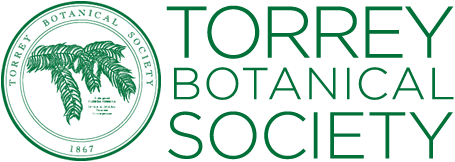Saturday, September 5th
With twenty species in the northeastern United States, the genus Persicaria (smartweeds) ranks among the largest genera of flowering plants in the region, just behind milkweeds and sunflowers. Many are native wetland species whose seeds are an important food source for waterfowl. Others such as the East Asian mile-a-minute vine can inflict great ecological and economic harm. On this field trip, Daniel Atha led the walk to point out the native and naturalized species growing on the Garden grounds, indicating unique characters for identification.
After a ten minute wait for late-comers, nine Smart Weed enthusiasts set out in search of Persicaria on the grounds of The New York Botanical Garden. The first species encountered was the ubiquitous Persicaria longiseta, common in rich, moist soil in most urban areas. The species is rarely found in natural habitats. The next species seen was Persicaria punctata, growing along the banks of the northwestern Twin Lake. The bravest in the group tasted the leaves, some declaring them very hot, others just mildly hot. After a brief walk to west bank of the Bronx River, about half the group decamped to the bridge, preferring the safety of pavement over walking through Nettle and Bur Cucumber (Sicyos angulata). There on the bank of the river, growing side by side as they often do, were Persicaria extremiorientalis and Persicaria lapathifolia. Even those on the bridge could see the pink and white spikes of the former and the pale, greenish white spikes of the latter. Even from a distance, the two species are unmistakable. Next seen was Persicaria pennsylvanica, growing along the bank of the River, just south of the Magnolia bridge. Growing with it was Persicaria hydropiper, another species with spicy leaves and fewer people willing to try a taste. The last species seen was Persicaria virginiana, growing abundantly along the split rail fence of the Thain Family Forest. Some in the group made videos of the elastically projected achenes, illustrating why the species is called jumpseed. The field trip concluded with a herbarium tour including specimens collected by Charles Darwin on the voyage of the Beagle, Joseph Banks on Captain Cook’s first circumnavigation and many others.
